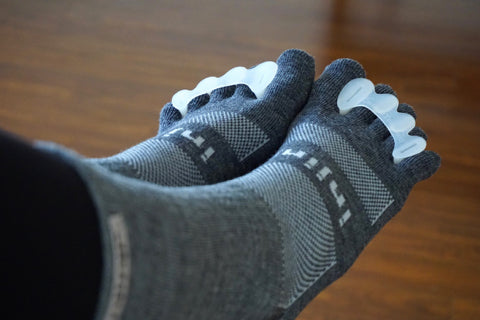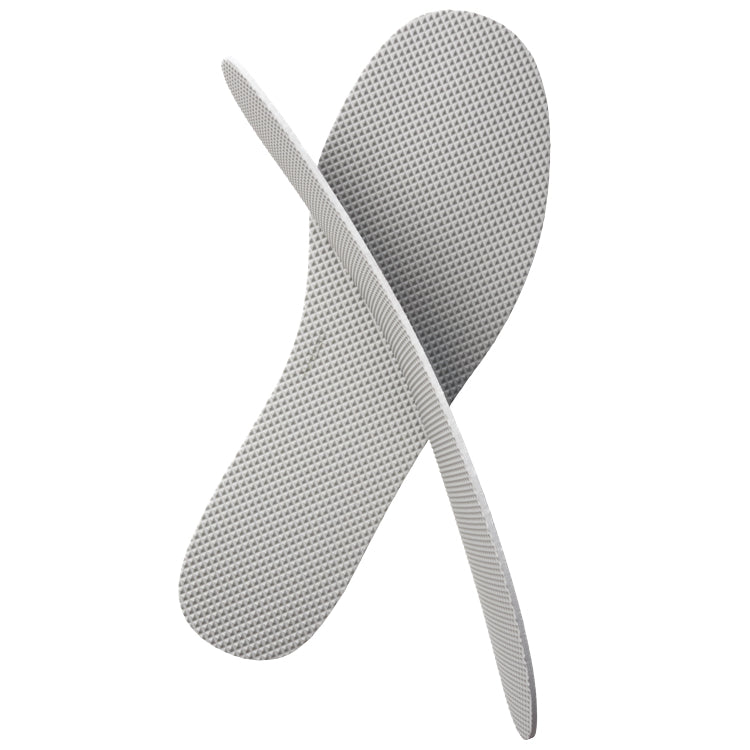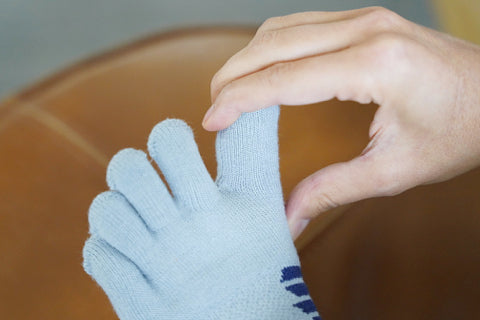
A lot of people with bunions assume they are predisposed to developing this foot problem because their older relatives had bunions. But it's impossible to state that bunions are hereditary if all the members of one's family have worn shoes with tapering toe boxes. Shoes with this injurious design feature hold the big toe in a bunion configuration for prolonged periods and are the direct cause of bunions in most people. Some individuals may have differences in their soft tissues that make bunions more likely to occur when wearing conventional footwear, but very few (if any) people actually possess a genetic component that directly causes bunions.
Humans are not born with bunions. It's only after the adoption of shoes with tapering toe boxes that this deformity begins to take shape. Footwear, beyond the earliest years of life, is not designed for a normal human foot. In fact, the current system for determining proper shoe width (Brannock Device) fails most people because it assumes that the foot should be widest at the ball, not at the ends of the toes. Most footwear on the market today is not compatible with natural foot health and does not respect normal foot anatomy.
An interesting study relating to this topic was published in the American Journal of Physical Anthropology in 2005. The study, conducted by S.A. Mays, examined the condition called hallux valgus—an abnormal deviation of the big toe toward the midline of the foot that’s generally considered to be the precursor of a bunion—in two series of medieval skeletons: One series from the earlier Medieval period, one series from the later Medieval period. Here is the abstract from the study:
Hallux valgus is the abnormal lateral deviation of the great toe. The principal cause is biomechanical, specifically the habitual use of footwear which constricts the toes. In this study, descriptions of the anatomical changes of hallux valgus from published cadaveric and clinical studies were used to generate criteria for identifying the condition in ancient skeletal remains. The value of systematic scoring of hallux valgus in paleopathology is illustrated using two British skeletal series, one dating from the earlier and one from the later Medieval period. It was found that hallux valgus was restricted to later Medieval burials. This appears consistent with archaeological and historical evidence for a rise in popularity, during the late Medieval period (at least among the richer social classes), of narrow, pointed shoes which would have constricted the toes.
Using ancient skeletal remains, this study makes the point that before people started adopting toe constricting footwear, toe alignment—including alignment of the big toe—was better. It's a common sense conclusion that's relevant to the discussion at hand regarding bunions and heredity. You can read the full study here.
Here are some additional resources that discuss bunions and various approaches for addressing or preventing this big toe dislocation problem:
To learn more about bunions, consider signing up for our free e-course on this topic. You can also select other foot-related topics that interest you.

WANT TO IMPROVE YOUR FOOT HEALTH?
Let the team at Natural Footgear help you! Subscribe to our newsletter for the latest offers and helpful info, and sign up for our FREE email courses on various topics and foot health conditions.
Sign Up →
Want to Improve Your Foot Health?
We are here to help you every step of the way. Get our newsletter for the latest offers and helpful info, and sign up for our FREE email courses on various topics and conditions, including bunions, hammertoes, neuromas, plantar fasciosis, shin splints, ingrown toenails, and more.
Sign Up →
 A natural approach to bunion rehabilitation can, in many cases, be very helpful in preventing the deformity from getting worse, though this always depends on the severity of the bunion and how long the problem has existed before beginning a foot and toe rehabilitation program. In our experience, we have found that the Big Toe Stretch is an effective frontline approach in preventing the worsening of a bunion. This exercise...
Read more
A natural approach to bunion rehabilitation can, in many cases, be very helpful in preventing the deformity from getting worse, though this always depends on the severity of the bunion and how long the problem has existed before beginning a foot and toe rehabilitation program. In our experience, we have found that the Big Toe Stretch is an effective frontline approach in preventing the worsening of a bunion. This exercise...
Read more












Say this louder for the folks in the back! I overheard a conversation between two women today. One was complaining about her foot pain caused by bunions, and the other must have said that she also had bunions. The first woman said, with the same excited voice that one would use if you found out the person you’re talking to lived on your same street growing up, “What?! That’s amazing! I have never met anyone else with adolescent bunions. My parents told me it’s hereditary.” I wanted to step out of my office to tell her she was wrong and that what she probably acquired was a penchant for wearing bunion-shaped shoes, but I thought better of it. Thanks for your work. I’m a 5-year convert to natural, healthy footwear after almost getting talked into surgery for mild hallux limitus, and I couldn’t be happier.
Hey, Lara! Thank you for your comment and for relaying your story. The temptation to jump into conversations like that is real! I’m so glad to hear that you’ve benefited so much from foot-healthy footwear, and I hope you enjoy much continued success going forward.
All the best,
Robyn Hughes, ND